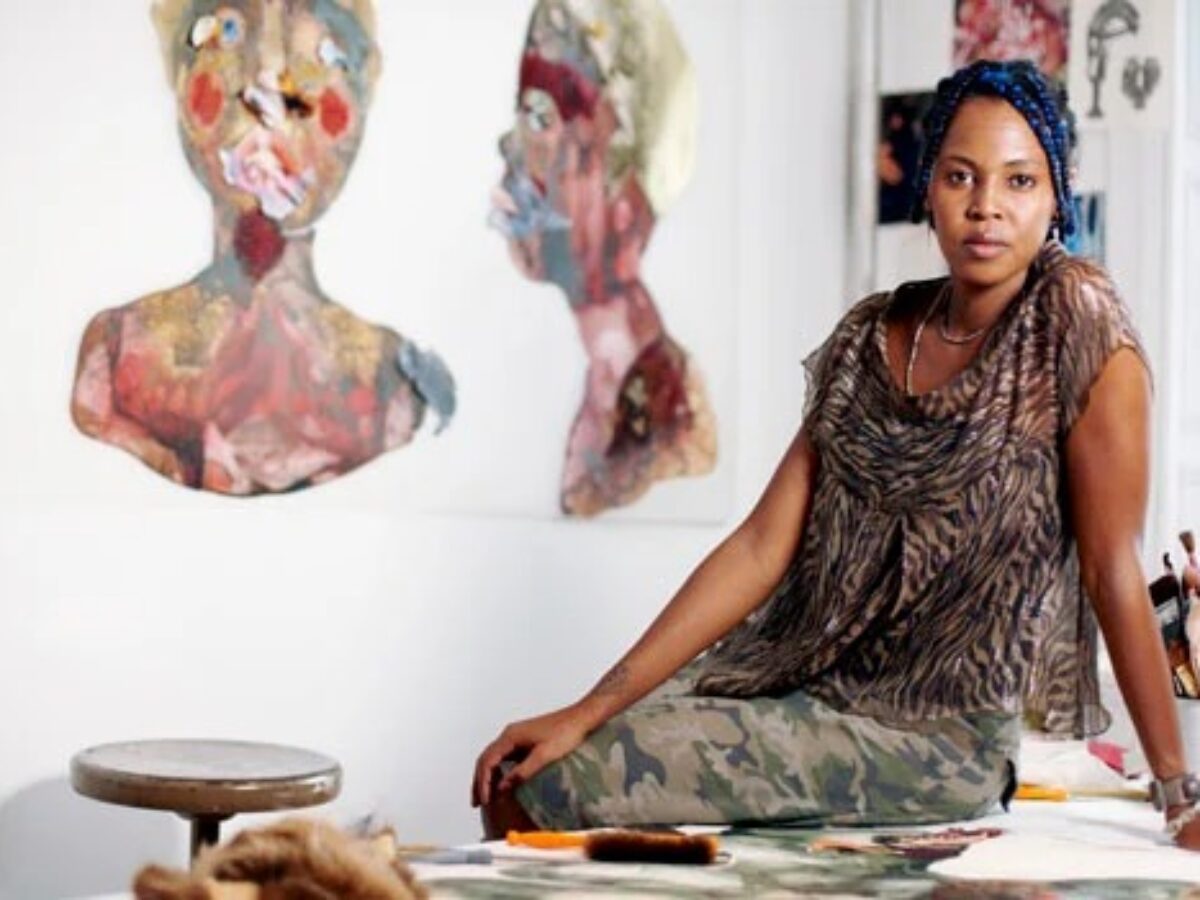Story by George Yawson Vineh
Wangechi Mutu, is a Kenyan American visual artist, known primarily for her painting, sculpture, film, and performance work.
Her work has directed the female body as subject through collage painting, immersive installation, and live and video performance while exploring questions on self-image, gender constructs, cultural trauma, and environmental destruction and notions of beauty and power.
Born in the Kenyan capital Nairobi in 1972 and educated at Loreto Convent Msongari from 1978–1989 she left Nairobi at age sixteen for high school, studying at the United World College of the Atlantic in Wales.
She later moved to New York in the late 1990s, focusing on Fine Arts and Anthropology at The New School for Social Research, and Parsons School of Art and Design. She earned a BFA degree from Cooper Union for the Advancement of the Arts and Science in 1996 and a master’s degree in sculpture from Yale School of Art in 2000.

After graduating from Yale, her work began popping up in important shows–many of them international exhibitions and biennials. In an email interview with NPR, Mutu wrote, “Making art and traveling are my greatest teachers. Everyone should travel, not just to see new things but to see new things in themselves.” In 2015, the artist made the decision to begin dividing her time between her studios in New York and Nairobi. These travels back and forth, she says, help give her valuable perspective: New York has “an addictive potency,” and its density of creative, entrepreneurial people inspires her greatly; Nairobi is “layered, lush, and encourages a coexistence between humans and the natural world,” and Mutu describes Kenya as a very attractive country, despite its “anglophone trauma.”
Mutu’s work crosses a variety of mediums, including collage, bricolage, video, performance, and sculpture, and investigates themes of gender, race, and colonialism. These mediums, many of which involve the mixing of materials, sources, and imagery, are more than just formal choices–they hint towards foundational themes of resilience and regeneration that appears throughout her oeuvre.
Her work, in part, centres on the violence and misrepresentation experienced by Black women in contemporary society. A recurring theme of Mutu’s work is her various depictions of femininity. Mutu uses the feminine subject in her art, even when the figures are more or less unrecognizable, whether by using the form itself or the texture and patterns the figure is made from. Sometimes she uses cliché images of archetypal women–mothers, virgins, goddesses–as source material, reconfiguring them to create potent, charged images that reflect her own emotional agency, as well as the agency, multitudes, and contradictions of womanhood in general. Her use of otherworldly depictions for women, many times shown in a seemingly sexual or sensual pose, brings about discussion of the objectification of women. Specifically, Mutu addresses the hyper-objectification of black female bodies and has used an otherworldly nature to reiterate the fictitious nature of society’s depictions of black women. She uses female subjectivity to examine other social and political issues as well; however, her aim is to always retain focus on female figures, identities, and experiences, in order to bring them to the forefront.
Whether through delicate lined patterns or familiar feminine builds, Mutu’s various ways of representing feminine qualities is said to enhance the strength of the images or the significance of the issues presented. Many of Mutu’s artworks are known to be interpreted in contradictory ways, both seen as complicit to problematic society and as hopeful for future change in society. It’s also been said that Mutu’s use of such intentionally repulsive or otherworldly imagery may help women to step away from society’s ideas of perfection and instead embrace their own imperfections and become more accepting of the flaws of others as well. Although her imagery of female figures has often been described as “grotesque”, she claims they are instead “disabled”, displaying a manifestation of historical and societal tensions present in black women’s identities. In these mangled forms, the struggle of women forced to comply with social expectations and historical oppressions is given physical form, portraying distinct inner turmoil.
Much of this is accomplished through her use of mixed media, which allows for her to unmake and reimagine bodies through modes of collage. In her Sentinel series which has been active from 2016 until now, she creates regal and fierce abstract female forms made from clay, wood and various found materials.
Mutu is able to enact personal and cultural transfigurations by transitioning from painting to sculpture and back again. Mutu says ” This transition was so powerful because I used my mind as an object maker – I think I always painted like a sculptor. ” In Mutu’s collage work she began to respond to Western advertisement and beauty standards: “I began an ongoing critique and an intellectual an actual vandalization of those images, which were violating me by rendering me invisible.
The themes and narratives of Mutu’s work create a visual representation of certain social, political, and physical realities of the world today. This includes issues of feminism, racism, the environment, and the effects of colonialism and rebuilding post-colonialism. Mutu’s visual arts deliberately reject colonial political and social constructs regarding these issues, instead deliberately examining them through the lens of the identities of black women. As a result, she is able to generate unique perspectives by under-represented identities, thus broadening and improving discourse surrounding certain issues, while also recognizing and emphasizing the importance of these women and their experiences.
In her art, Mutu presents complex narratives of mental anguish and, in many ways, crises of identity. Her material transformations of the human body imply a theoretical layer, where psychological aspects of African experience can be represented.
Mutu views her own art as a form of self-reflection, and as a way to process her own identity being boiled down to “black” as an African woman in America. Furthermore, she uses her art as a way to examine how African identities and experiences on the whole are oversimplified in western discourse, bringing the reality of the intricacies of feminism and colonialism to the forefront through the aesthetics of collage, mixed media art, and Afrofuturism.


